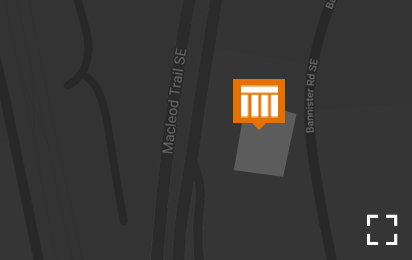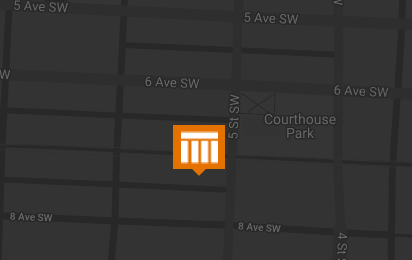Publication
"Physician Assisted Death in Alberta: HS (Re), 2016 ABQB 121"
"Physician Assisted Death in Alberta: HS (Re), 2016 ABQB 121"
HS, an adult woman with amyotrophic lateral sclerosis (“ALS”), sought authorization from the Court of Queen’s Bench to end her life through physicianassisted death (“PAD”). Following the Supreme Court of Canada’s (the “SCC”) decision in Carter v Canada (Attorney General), 2016 SCC 4 (“Carter 2016”) and Carter v Canada (Attorney General), 2015 SCC 5 (“Carter 2015”), other than newly passed legislation in Quebec, An Act Respecting End-of-Life Care, CQLR c S-32.0001, that was enacted in December 2015 to “ensure that end-of-life patients receive care that respects their dignity and their autonomy” (at para 35), this is one of the first known Canadian decisions to consider and apply the criteria outlined in Carter 2016 regarding PAD (HS (Re), at para 4). The criteria applied to determine if a constitutional exemption is whether a “competent adult persons who (1) clearly consent to the termination of life and (2) have a grievous and irremediable medical condition that causes enduring suffering that is intolerable to the individual in the circumstances of his or her condition and that cannot be alleviated by any treatment acceptable to the individual” HS (Re), at para 2).
In Carter 2015, the SCC struck down the provisions of the Criminal Code prohibiting PAD and suspended its declaration of invalidity for 12 months, ending in February 6, 2016 (at paras 30 and 31). The Supreme Court in Carter 2016 extended this time for another 4 months, expiring June 6, 2016, and provided a constitutional exemption to individuals who met the criteria provided for in Carter 2015, permitting them to have a PAD (at paras 42 and 48). Further, Carter 2016 exempted Quebec from the application of the case, as the newly passed legislation will suffice until the federal government comes to a decision on the appropriate legislation later this year (at paras 45-47). This decision is the first of its kind and has been praised for Honorable Justice S.L. Martin’s application of the Carter decisions and the respectfulness towards the Court’s role in authorizing PAD.1
Facts
HS’s application was heard on an expedited basis on February 25, 2016. HS is a retired clinical psychologist who obtained a Masters degree in psychology and worked in the healthcare system in Calgary for over 34 years, describing those decades as “‘very healthy, productive years and most rewarding’” (at para 6). Before being diagnosed with ALS, HS was in good physical and mental health and was very active. In April 2013, after developing a speech impairment, she was eventually diagnosed with ALS (at paras 7 and 8). Her ALS progressed rapidly and she continued to attend treatment at the Calgary ALS and Motor Neuron Disease Clinic until October 2015 after it was concluded that there was nothing more to prevent the progress of her disease (at para 9). With at most 6 months to live, HS is “severely physically disabled” and confined to a wheelchair. Although mentally alert, she is unable to speak, completely paralyzed, in significant pain, cannot swallow, and requires constant care and support (at paras 10-12). The only way that HS is able to communicate is through a device operated through the limited movements of her left hand.
HS sought PAD through two named physicians who “would provide her with medication to induce death” on a private property located in Vancouver, British Columbia (at para 14). She confirmed she is not suffering from anxiety, depression or fear of death, but wants to pass away peacefully through PAD (at para 15).
Justice Martin interpreted the Carter 2016 decision to have granted the personal constitutional exemption and that the role of the Court of Queen’s Bench in Alberta was “limited to applying or authorizing an existing constitutional exemption and determining whether a particular person qualifies for that exemption” (at para 51), which does not require a “full blown inquiry” that is necessary for constitutional analyses (at paras 50 and 57). As Quebec was granted an exemption under Carter 2016, the granting of a similar exemption to others would support the SCC’s majority’s goal of “fairness and equality” (at para 56). Therefore, Justice Martin was faced with deciding if HS met the criteria for the exemption, allowing her to have PAD.
Issue
The Court defined the issues as follows, at para 60: …
[W]hether or not the applicant meets the criteria set out in Carter 2015 for a declaration by this court that she is eligible for a [PAD].
Holding
The Court held that based on the evidence provided, HS met all the criteria under para 127 in Carter 2015 and therefore qualifies for the constitutional exemption granted by the Supreme Court in Carter 2016 to have a PAD if she so chooses (at paras 61 and 127).
Court Analysis
The Court first looked to process and evidence, particularly regarding who was required notice of the application, confidentiality concerns and evidence. Regarding notice, Justice Martin believed there was sufficient notice provided by HS to the relevant parties, which included the Attorneys General of Canada, Alberta and British Columbia (at para 69). Several organizations had sent letters to the Chief Justice providing information and requesting notification of applications for PAD. Justice Martin stated that such organizations “have no apparent role in the play on the merits of an application”, but certain circumstances may warrant the assistance of these organization in “the crafting of an order if the court finds that the criteria are met” (at para 75), however, this application was not the case.
As for confidentiality concerns, HS requested that all court filed documents be sealed, a publication ban be granted, initials be used to protect individuals’ identity, and that the trial be held in camera (at para 78). Although there was criticism from the media regarding the private nature of the case, Justice Martin held that HS’s “privacy outweighs the benefit of an open courtroom” (at para 81). The ban was in the best interest of HS and the ban outweighed the “deleterious effects” in this case (at para 84), relying on various cases, including Dagenais v Canadian Broadcasting Corp, [1994] 3 SCR 835 and Re Vancouver Sun, 2004 SCC 43, 2 SCR 332. She granted HS’s requests, subject to the allowance of a physician involved, whose lawyer argued that he needed to view the case in order to properly advise his clients in the future (at para 77). Justice Martin further noted that the written judgment provides “an alternative mechanism for achieving accountability and transparency and respects the fundamental principles behind the open court principle” (at para 82).
In respect to the evidence provided by HS and her counsel, the evidence contained within the Initial and Supplementary Affidavit was found to be sufficient for her application (at para 89). Although Justice Martin noted it would be preferable to have affidavits sworn by the physicians themselves, attaching their statements regarding HS’ treatment as exhibits to the applicant’s affidavits was acceptable (at para 90). Justice Martin found that she could use other provincial protocols, including those from British Columbia, and the Quebec legislation for guidance, she was ultimately bound to follow the interpretation of the Carter cases (at paras 64- 65, 67), allowing for a flexible approach to evidence.
The Court went through the five point criteria outlined in Carter 2015 to determine if HS had met her burden of proof.
A) HS is a competent adult
HS is found to be a competent adult, as provided in evidence from her family, friends and physicians (at para 95-97). Depression is not a necessary consideration at this time, as evidence demonstrated that HS is likely not depressed (at para 101).
B) HS clearly consented to PAD
HS freely consents to PAD, as she outlined in her Affidavit, and had explored this option years prior to this application, including looking into Switzerland and Quebec (at paras 103-104). She had been informed of the risks associated with PAD and was very unsatisfied with the feasible treatment available to her for the remaining few months of her life (at paras 106-107).
C) HS suffers from ALS, a grievous and irremediable medical condition
Justice Martin stated that “ALS is a grievous and irremediable medical condition… [that is] progressive and ultimately terminal disease that has no cure” (at para 109). Further, the grievous nature of ALS has been discussed in various case law and no further analysis was necessary.
D) HS’s ALS is causing her enduring, intolerable suffering
HS stated in her Affidavit that she is seriously suffering, is afraid of dying by chocking on her own bodily fluids, and is in constant pain, requiring continual care (at para 111). She no longer has control over her bodily functions and is “losing her ability to communicate” (at para 112). Justice Martin concluded that HS had satisfied the criteria under this heading.
E) HS’s suffering cannot be alleviated by any treatment acceptable to her
Finally, HS provided evidence that she is significantly deteriorating in health, there was no further treatment to assist with her ALS, and that she has no desire to “‘to live sedated to the point of unconsciousness’” (at paras 114- 116). Based on the evidence provided, Justice Martin held that HS had met the criterion from Carter 2015.
Justice Martin went on to discuss two further issues. The first issue went to the geographical scope of the order, a question that was raised by the Attorney General of British Columbia, as the PAD will be conducted in British Columbia. Justice Martin was satisfied that she had jurisdiction to hear the application and interpreted the SCC’s request in Carter 2016 to apply “to the superior court of their jurisdiction” to be the jurisdiction in which the applicant resides in, which in this case is Alberta (at para 122).
In addition, Justice Martin discussed who was included under Carter 2015’s coined term of “PAD”. As nurses and technicians were not to be used in HS’s PAD, it was not necessary to determine if they would be included under this meaning (at para 124). However, along with the physicians directly assisting with the PAD, “licensed pharmacists who prepare and provide medications are necessarily and definitionally protected” under the Supreme Court’s term of “PAD” (at para 126), and are exempt from the impugned provisions under the Criminal Code.
PAD is an important and evolving issue. We continue to wait for Parliament to enact considered and appropriate legislation. The Federal and Provincial governments are seeking input from lawyers and medical service providers. In the interim, there is a process set out by the Supreme Court of Canada and Justice Martin of Alberta’s Queen’s Bench.
For further information please contact one of the authors, Aaron Bickman at 403.873.3734 or Emma Hammilton at 403.873.3740, or any member of our Wills & Estates Group.
Citations
1. Jennifer Koshan, Constitutional Exemptions for Physician Assisted Dying: The First Case of Judicial Authorization in Alberta (ABlawg.ca, March 3, 2016).

